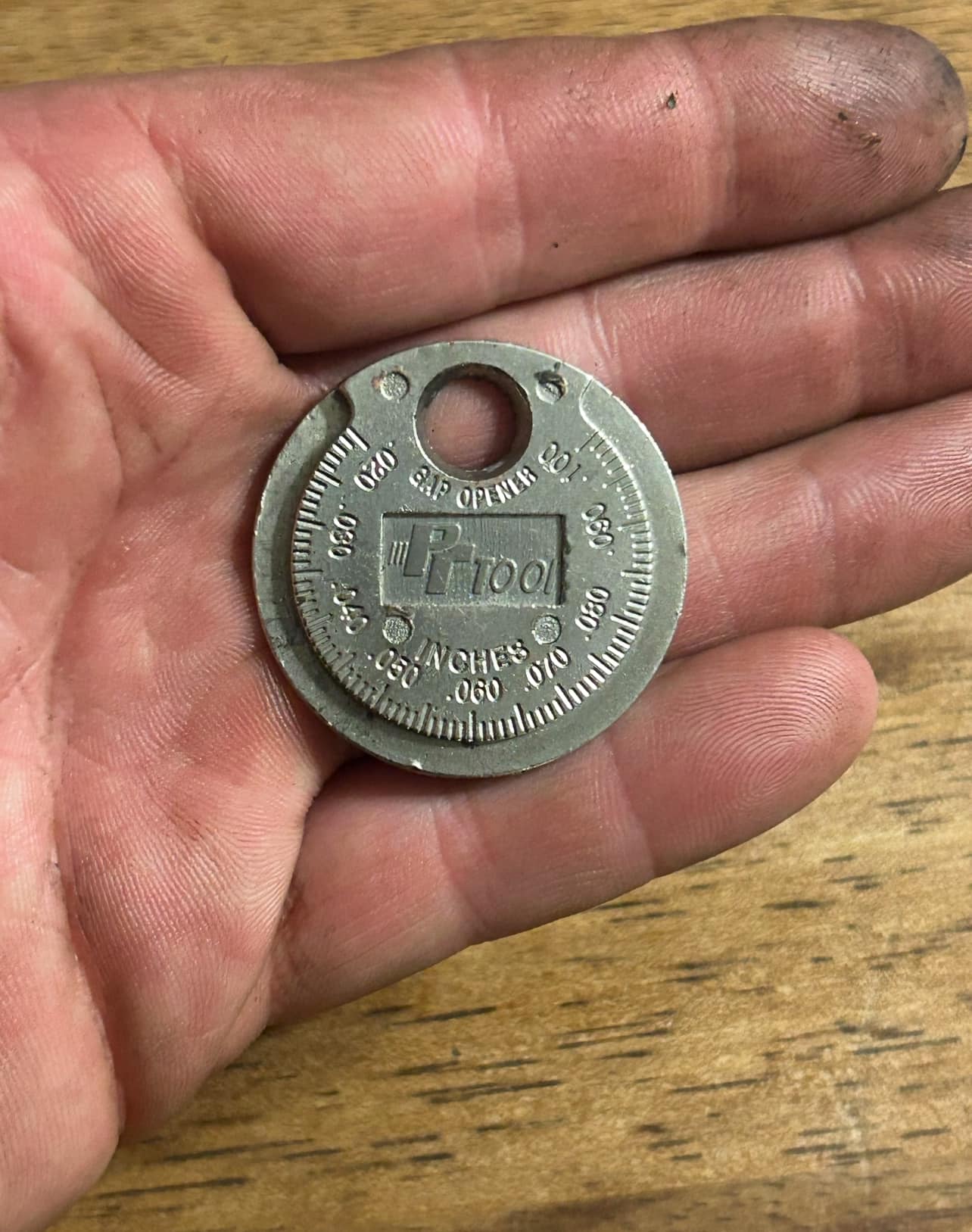There’s a small yet incredibly important tool that keeps engines running at their best, but unless you’ve spent time working on engines, you probably haven’t even heard of it. In fact, most people under 30 likely have no idea what it does. It’s simple, compact, and often overlooked, but for anyone who knows their way around an engine, it’s absolutely essential. If you recognize this tool, odds are you’ve spent plenty of time fine-tuning engines and making sure they perform smoothly. The tool in question is the spark plug gap gauge. It may be small, but it plays a huge role in how efficiently and reliably an engine runs. Without it, your spark plugs might not fire correctly, which can lead to poor fuel efficiency, rough idling, misfires, and a host of other engine issues. This unassuming tool is a must-have for anyone who takes engine maintenance seriously, whether you’re a professional mechanic or just a DIY enthusiast working on your car in the garage.

So, what exactly is a spark plug gap gauge? Simply put, it’s a precision measuring tool designed to check and adjust the gap between the electrodes on a spark plug. That gap is critically important because it controls how well the spark plug can ignite the fuel-air mixture inside an engine. If the gap is too wide, the spark may be too weak to ignite the mixture effectively, which can lead to misfires or incomplete combustion. On the other hand, if the gap is too narrow, the spark may not have enough power to ignite the mixture properly, causing reduced performance and wasted fuel. Either scenario can lead to engine problems, lower fuel economy, and even long-term damage. Every engine has specific requirements for the spark plug gap, and modern engines are engineered for precision. Keeping the spark plug gap within the recommended range ensures efficient combustion, smooth performance, and better fuel economy. It also extends the life of your spark plugs, saving you money in the long run.
There are a few different types of spark plug gap gauges available, each suited to different preferences and needs. The most common type is the coin-style gap gauge. This handy tool looks like a small metal coin with tapered, notched edges. To measure the gap, you simply slide the edge between the spark plug’s electrodes until you reach the correct measurement. Another popular option is the wire loop gauge. This tool features a series of wire loops, each with a precise thickness. It’s a little more accurate than the coin-style gauge, but it can be more time-consuming to use. Lastly, there’s the feeler gauge, which consists of a set of thin metal blades, each marked with its thickness. Many professional mechanics prefer the feeler gauge because it offers the most precise measurement and adjustment capabilities.
Using a spark plug gap gauge is straightforward, but accuracy is key. Start by checking your vehicle’s manual or the packaging on your spark plugs to find the recommended gap size. This number varies depending on the engine and spark plug type. Once you know the correct gap, hold the spark plug so the electrodes are facing you. Insert your chosen gauge into the gap. If it fits snugly without forcing it or leaving extra space, the gap is correct. If the fit is too tight or loose, you’ll need to adjust it. If the gap is too wide, gently push the ground electrode closer to the center electrode. If it’s too narrow, carefully pull the ground electrode outward. Always avoid using excessive force—spark plugs are delicate, and damaging the electrode can ruin the plug. Once you’ve made an adjustment, recheck the gap to ensure it’s accurate. Precision matters, as even a small error can impact engine performance.
Even experienced mechanics can make mistakes when gapping spark plugs. Common errors include using the wrong type of gauge, applying too much pressure when adjusting the electrode, skipping the measurement step on new plugs, and forgetting to double-check the gap after making adjustments. Even spark plugs labeled as “pre-gapped” from the factory can be slightly off due to shipping or handling, so it’s always a good idea to verify before installation. Some modern vehicles, particularly those with coil-on-plug ignition systems, are even more sensitive to spark plug gaps, making proper measurement and adjustment even more important.
If you care about vehicle maintenance, a spark plug gap gauge is an essential addition to your toolbox. They’re inexpensive, small enough to carry in your pocket, and they make a significant difference in engine performance. Properly gapped spark plugs lead to smoother acceleration, improved fuel economy, and can help prevent costly engine repairs caused by misfires or poor combustion. Plus, they’re easy to use—you just need a little patience and attention to detail. In the world of automotive maintenance, sometimes it’s the smallest tools that make the biggest difference. The spark plug gap gauge may seem insignificant, but it plays a vital role in keeping engines running smoothly and efficiently. Whether you’re maintaining a classic car or tuning up a modern ride, this tool ensures your spark plugs perform exactly as they should. Never underestimate the power of precision.





